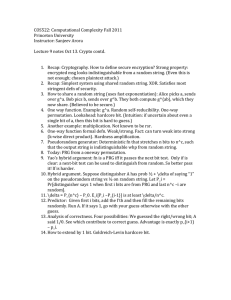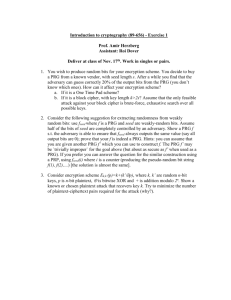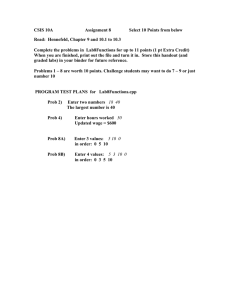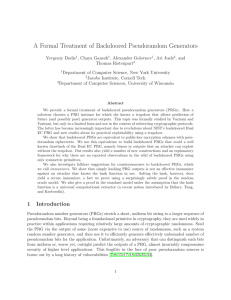Lec 10
advertisement
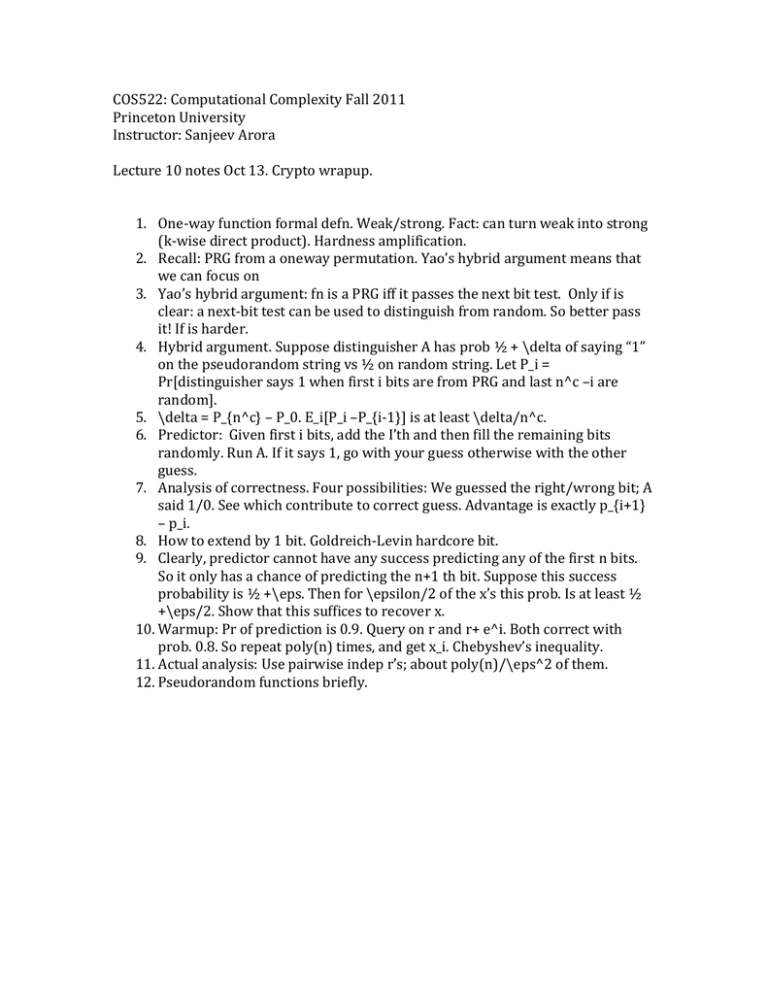
COS522: Computational Complexity Fall 2011
Princeton University
Instructor: Sanjeev Arora
Lecture 10 notes Oct 13. Crypto wrapup.
1. One-way function formal defn. Weak/strong. Fact: can turn weak into strong
(k-wise direct product). Hardness amplification.
2. Recall: PRG from a oneway permutation. Yao’s hybrid argument means that
we can focus on
3. Yao’s hybrid argument: fn is a PRG iff it passes the next bit test. Only if is
clear: a next-bit test can be used to distinguish from random. So better pass
it! If is harder.
4. Hybrid argument. Suppose distinguisher A has prob ½ + \delta of saying “1”
on the pseudorandom string vs ½ on random string. Let P_i =
Pr[distinguisher says 1 when first i bits are from PRG and last n^c –i are
random].
5. \delta = P_{n^c} – P_0. E_i[P_i –P_{i-1}] is at least \delta/n^c.
6. Predictor: Given first i bits, add the I’th and then fill the remaining bits
randomly. Run A. If it says 1, go with your guess otherwise with the other
guess.
7. Analysis of correctness. Four possibilities: We guessed the right/wrong bit; A
said 1/0. See which contribute to correct guess. Advantage is exactly p_{i+1}
– p_i.
8. How to extend by 1 bit. Goldreich-Levin hardcore bit.
9. Clearly, predictor cannot have any success predicting any of the first n bits.
So it only has a chance of predicting the n+1 th bit. Suppose this success
probability is ½ +\eps. Then for \epsilon/2 of the x’s this prob. Is at least ½
+\eps/2. Show that this suffices to recover x.
10. Warmup: Pr of prediction is 0.9. Query on r and r+ e^i. Both correct with
prob. 0.8. So repeat poly(n) times, and get x_i. Chebyshev’s inequality.
11. Actual analysis: Use pairwise indep r’s; about poly(n)/\eps^2 of them.
12. Pseudorandom functions briefly.
